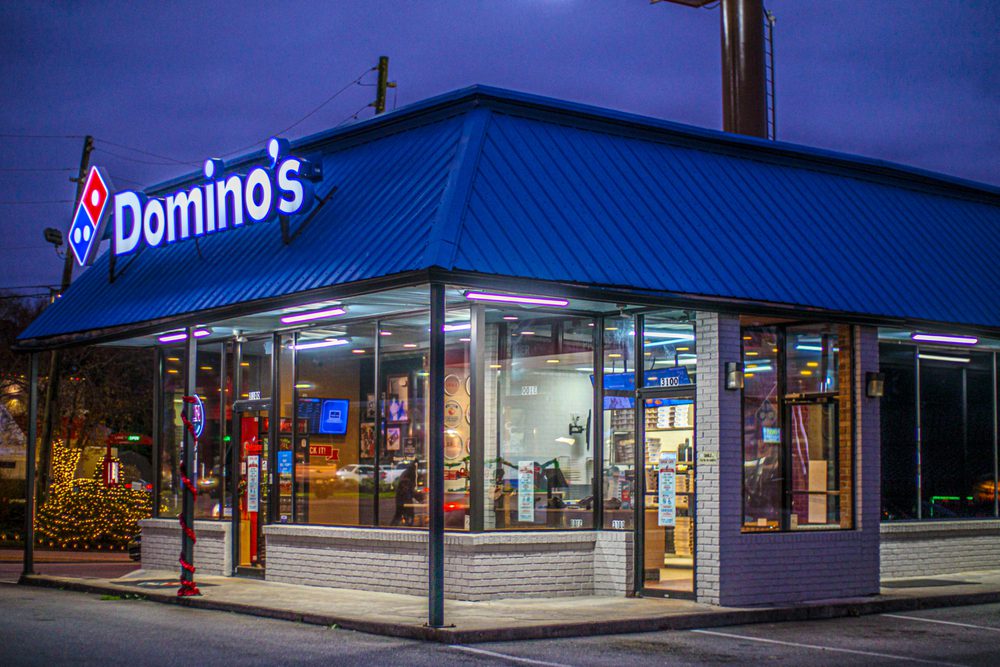Domino’s Sees Diners Skip Delivery Amid Inflationary Pressures

As consumers rein in food spending amid inflation, many opt out of pizza delivery.
Quick-service restaurant (QSR) giant Domino’s Pizza, which has more than 19,500 stores around the world, shared Thursday (Feb. 23) on a call with analysts discussing its fourth quarter 2022 financial results how rising food prices are affecting consumers’ ordering habits.
“Inflation impacted delivery due to the added expenses of fees and tips on that channel. Our research shows that a relatively higher delivery costs during inflationary time leads some customers to prepare meals at home instead of getting them delivered,” the pizza chain’s CEO Russell Weiner said. “We believe this dynamic will continue to pressure the delivery category in the short term, as long as consumers’ disposable income remains pressured by macro-economic factors.”
Specifically, same-store delivery sales were down 6.6% year over year, as Chief Financial Officer Sandeep Reddy noted.
Indeed, consumers are facing increasing financial challenges. Research from PYMNTS’ study “New Reality Check: The Paycheck-To-Paycheck Report – The Economic Outlook and Sentiment Edition,” created in collaboration with LendingClub, which draws from a survey of nearly 4,000 U.S. consumers in December, finds that 9.3 million more U.S. consumers ended 2022 living paycheck to paycheck than in 2021.
With these increasing economic pressures come changes to how consumers spend on indulgences such as, say, ordering pizza in. According to data from PYMNTS’ report “The 2022 Restaurant Digital Divide: Restaurant Customers React To Rising Costs, Declining Service,” anywhere from 67% to 88% of diners, depending on generation, have made changes to their dining spending in response to inflation.
Plus, the study, for which we surveyed more than 2,300 restaurant customers in December, reveals that the most common change is purchasing from restaurants less often.
Consumers’ belt-tightening when it comes to restaurant spending is exacerbated by the fact that they overestimate the rate of restaurant inflation. The survey found that consumers estimate restaurants’ prices to have increased 24%, while in December, at the time of the survey, the United States Bureau of Labor Statistics (BLS) Consumer Price Index (CPI) revealed that the rise was only a third of that — 8%.
Speaking to the decrease in delivery sales, Reddy explained on the call, “In the case of [the] pizza QSR [segment], this was driven [largely] by a shift from delivery to sit-down and cooking at home.”
Sure enough, consumers are cooking at home more. In fact, research from PYMNTS’ study “Consumer Inflation Sentiment: Inflation Slowly Ebbs, but Consumer Outlook Remains Gloomy,” which drew from a survey of more than 2,100 consumers, found that 78% have been eating at home more often to save money amid inflation.
Plus, this rise in at-home consumption comes not only from cooking more but also from finding other budget-friendly alternatives to restaurant ordering are quicker than preparing a meal from scratch.
For instance, Casey’s General Stores, the nation’s third-largest convenience retailer, observed that low-income consumers are turning to packaged items such as protein shakes as meal replacements. Meanwhile, Walmart’s membership-only retail warehouse club subsidiary Sam’s Club has been seeing increased demand for prepared foods.
Research from PYMNTS’ report “Digital Economy Payments: Consumers Buy Into Food Bargains” found that 37% of consumers bought prepared food on their most recent grocery trip, up 7 points from the 30% of consumers who had done so back in November 2021.
